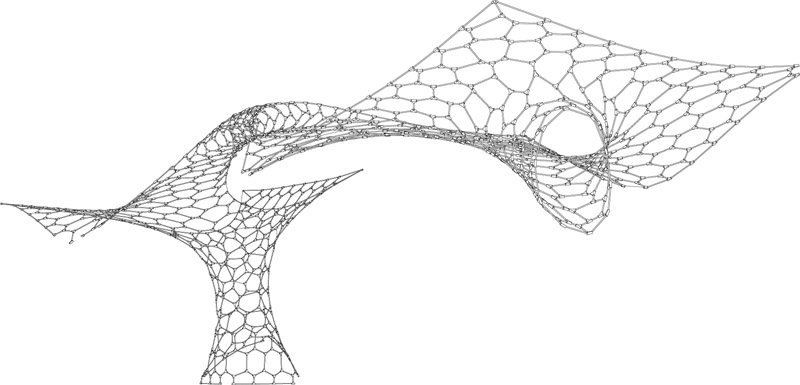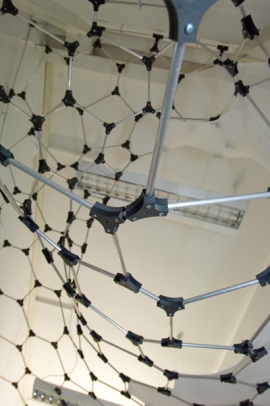
The Radiolaria Project out of the University of Kassel by Christian Troche and Gregor Zimmermann is one of those projects that simply cant be summarized in one post, but as usual we’ll attempt anyway. Anyone interested in understanding this valiant research effort should definitely visit thier project website here. Put simply the project is an attempt at understanding the structural applications of algorithms derived from the skeletons of various marine animals, most notably the Radiolarians. Their work which is meticulously documented eventually results in a life scale installation at the University. Stunning work.

From the website regarding the Radiolarians inspiration:
“The new designs that contemporary 3d modelling software lay at our hands, demand for innovative structural solutions. The radiolaria project aims to study the abiotic principles behind the self-generation of the radiolarian skeletons and transfer these to non-standard architectural designs, preserving both their structural stability and their amazing beautiful aesthetics. The Radiolarians delicate hexagonal skeletons owe their shape to a fundamental phenomenon in nature: The densest possible packing of spheres. Free floating spherical compartments of organic matter aggregate in a stable arrangement. Silicious material accumulates at the contact areas and especially in the interstices between the spheres, progressively forming a connected network with hexagonal shaped cells.”
From here the designers moved on to see how they can apply these techniques to an actual mesh installation, there is much to learn about digital fabrication as well on their own website, its truly one of the most well-rounded projects we have seen in this arena of architectural research:

close ups of the connections and joints:

We are currently trying to get in contact with the authors to get more words and images on the project.

Hi there,
I am a University student currently doing my dissertation on Biomimetics, specifically I am aiming to make a more environmentally friendly house based on biomimetic structures and materials.
I was wondering if you could suggest any good structures found in nature which would suit a typical house?
Thanks
Pingback: Marine Muse: 12 More Sea-Inspired Designs & Inventions | WebEcoist